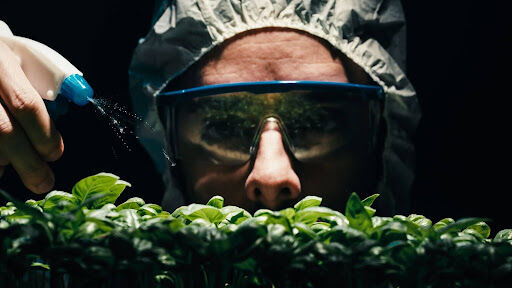
Creating a thriving grow tent garden involves more than just providing the right light, nutrients, and water. Effective pest control is crucial to protect your plants from common pests that can disrupt their growth and overall health. This comprehensive guide will explore various pest control strategies tailored specifically for grow tents, ensuring your indoor garden remains healthy and productive.
Understanding Common Pests
Before we discuss pest control for grow tents, let's look at some of the more common pests that can threaten your indoor garden. Recognizing these pests is an important part of controlling them.
Spider Mites
Spider mites are tiny arachnids that thrive in warm, dry conditions. They can quickly multiply and cause significant damage by sucking the sap from leaves, leading to stippling and yellowing.
Aphids
Aphids are small, soft-bodied insects that cluster on new growth and suck plant sap. They can transmit viruses and attract ants, which protect them from predators.
Whiteflies
Whiteflies are small, flying insects that feed on plant sap. They can cause yellowing leaves and may also spread diseases.
Fungus Gnats
Fungus gnats are small flies whose larvae feed on plant roots, leading to stunted growth and root rot. They thrive in moist soil conditions.
Thrips
Thrips are tiny, slender insects that can cause significant damage by feeding on plant tissues and spreading diseases.
Preventive Measures
Maintain Cleanliness
Regular cleaning is essential for preventing pest infestations:
Sanitize Tools: Disinfect all gardening tools before use to avoid transferring pests.
Remove Debris: Clear away dead leaves and organic matter from the grow tent to eliminate hiding spots for pests.
Wash Surfaces: Wipe down walls, floors, and shelves with a mild soap solution to remove any potential pest eggs or larvae.
Monitor Environmental Conditions

Pests thrive in specific environmental conditions:
Humidity Control: Keep humidity levels between 40-60%. Use a hygrometer to monitor levels and a dehumidifier if necessary.
Temperature Regulation: Maintain a consistent temperature between 70°F to 80°F (21°C to 27°C) during the day and slightly cooler at night.
Air Circulation: Ensure adequate airflow within the grow tent using fans to prevent stagnant air, which can attract pests.
Manage Soil Quality
Choosing the right soil mix is vital:
Sterile Soil: Start with sterile potting soil or pre-mixed organic soil designed for indoor gardening to minimize pest risks.
Avoid Overwatering: Overly moist soil can attract pests like fungus gnats. Allow the top inch of soil to dry out between waterings.
Biological Control Methods
Beneficial Insects

Introduce beneficial insects that prey on common pests:
Ladybugs: Effective against aphids and spider mites; they consume large quantities of these pests.
Predatory Mites: These tiny mites feed on spider mites and thrips without harming your plants.
Lacewings: Their larvae consume aphids, thrips, and other soft-bodied insects.
Neem Oil
Neem oil is a natural pesticide derived from the seeds of the neem tree:
How It Works: Neem oil disrupts the life cycle of pests by interfering with their hormone systems, making it difficult for them to grow and reproduce.
Application: Mix neem oil with water according to package instructions and spray it on affected plants every 7-14 days until the infestation is under control.
Chemical Control Options
Insecticidal Soaps
Insecticidal soaps are effective against soft-bodied insects:
How They Work: These soaps suffocate pests upon contact without harming beneficial insects when used correctly.
Application Tips: Spray directly onto affected areas, ensuring thorough coverage of both the tops and undersides of leaves.
Pyrethrin-Based Insecticides
Pyrethrin is derived from chrysanthemum flowers:
Effectiveness: It targets a wide range of pests but should be used judiciously to avoid harming beneficial insects.
Safety Precautions: Apply during low-light hours (early morning or late evening) to minimize impact on pollinators.
Integrated Pest Management (IPM)
Adopting an Integrated Pest Management (IPM) approach combines multiple strategies for effective pest control:
Regular Monitoring
Routine inspections are key:
Visual Checks: Examine plants weekly for signs of pests or damage.
Sticky Traps: Place yellow sticky traps near plants to catch flying pests like whiteflies and fungus gnats.
Threshold Levels
Establish acceptable pest levels:
Action Thresholds: Determine when pest populations reach a level that requires intervention; not all pests need immediate action.
Cultural Practices
Implement cultural practices that deter pests:
Crop Rotation: Change plant varieties each growing season to disrupt pest life cycles.
Companion Planting: Use companion plants that repel pests (e.g., marigolds deter nematodes).
Implementing these pest control strategies in your grow tent garden will help you maintain a healthy environment for your plants while minimizing pest-related issues. By combining preventive measures, biological controls, chemical options, and an Integrated Pest Management approach, you can ensure your indoor garden flourishes without significant pest interference.






(0) comments
We welcome your comments
Log In
Post a comment as Guest
Keep it Clean. Please avoid obscene, vulgar, lewd, racist or sexually-oriented language.
PLEASE TURN OFF YOUR CAPS LOCK.
Don't Threaten. Threats of harming another person will not be tolerated.
Be Truthful. Don't knowingly lie about anyone or anything.
Be Nice. No racism, sexism or any sort of -ism that is degrading to another person.
Be Proactive. Use the 'Report' link on each comment to let us know of abusive posts.
Share with Us. We'd love to hear eyewitness accounts, the history behind an article.